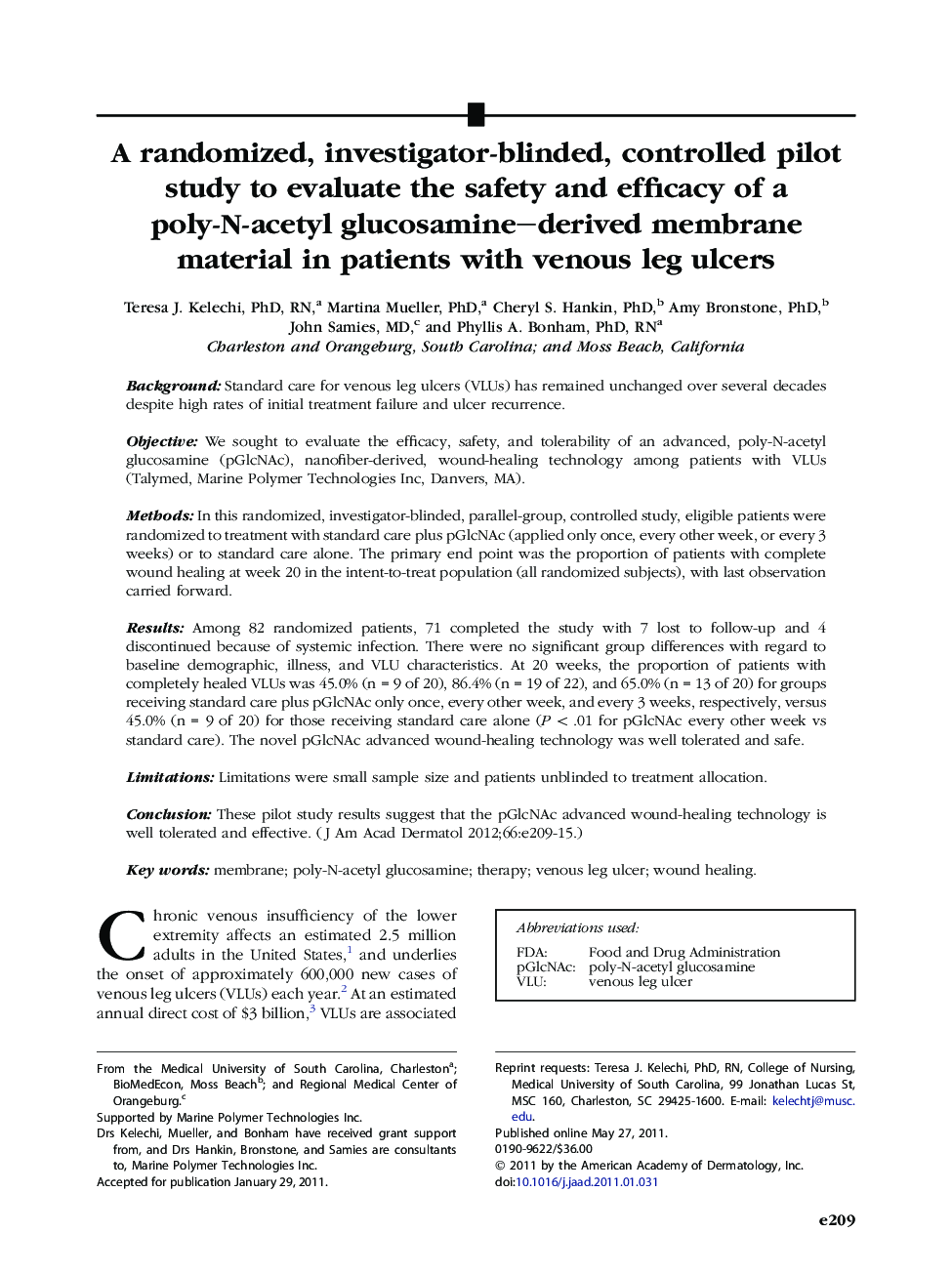| Article ID | Journal | Published Year | Pages | File Type |
|---|---|---|---|---|
| 3207033 | Journal of the American Academy of Dermatology | 2012 | 7 Pages |
BackgroundStandard care for venous leg ulcers (VLUs) has remained unchanged over several decades despite high rates of initial treatment failure and ulcer recurrence.ObjectiveWe sought to evaluate the efficacy, safety, and tolerability of an advanced, poly-N-acetyl glucosamine (pGlcNAc), nanofiber-derived, wound-healing technology among patients with VLUs (Talymed, Marine Polymer Technologies Inc, Danvers, MA).MethodsIn this randomized, investigator-blinded, parallel-group, controlled study, eligible patients were randomized to treatment with standard care plus pGlcNAc (applied only once, every other week, or every 3 weeks) or to standard care alone. The primary end point was the proportion of patients with complete wound healing at week 20 in the intent-to-treat population (all randomized subjects), with last observation carried forward.ResultsAmong 82 randomized patients, 71 completed the study with 7 lost to follow-up and 4 discontinued because of systemic infection. There were no significant group differences with regard to baseline demographic, illness, and VLU characteristics. At 20 weeks, the proportion of patients with completely healed VLUs was 45.0% (n = 9 of 20), 86.4% (n = 19 of 22), and 65.0% (n = 13 of 20) for groups receiving standard care plus pGlcNAc only once, every other week, and every 3 weeks, respectively, versus 45.0% (n = 9 of 20) for those receiving standard care alone (P < .01 for pGlcNAc every other week vs standard care). The novel pGlcNAc advanced wound-healing technology was well tolerated and safe.LimitationsLimitations were small sample size and patients unblinded to treatment allocation.ConclusionThese pilot study results suggest that the pGlcNAc advanced wound-healing technology is well tolerated and effective.
